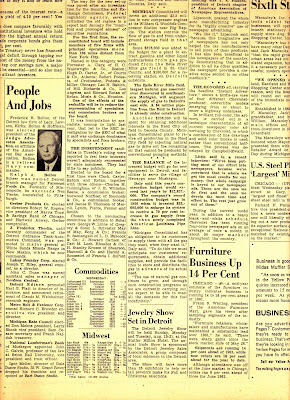



This is a fine example of the importance of newspapers to Chevrolet. It is four consecutive full pages that ran in every major paper in the country. And the following black and white ads shown below are follow up ads. Newspapers do not represent the major communication media today that they did back then when nearly everybody got their news from their local paper. My how things have changed. These were all what was called "run of press ads". All that means is that there was no special paper used or anything done to help the ads appear better. Later we would run four page units printed on better paper and in full color.
The aggressive and competitive nature of the copy was the concept of Chuck Felt who was Chevy creative director and my boss at the time. It was a major shift in Chevy communications. Chuck wrote some of the ads himself and was very demanding that all the ads follow the format.
The photographs for the Caprice and Impala ads were shot on the Wabeek Farm just off Long Lake Road in West Bloomfield, Michigan. The area is full of condos and large homes today but back then it was farm land with cows roaming the pasture where we did the photography. At the time I lived on Pine Lake and the location was only about a mile from my home. Warren Winstanley was the photographer I worked with and he lived way over near Lake Sinclair. Usually I had to go to a location he found but this time it was my find. To do the pictures required everyone to be on location before dawn with plenty of time to get the shot set up. The cars had to be brought in by covered vans and all the models there on time. It is amazing the number of people it took to make a major photograph. There had to be a number of police on hand too. They were usually off duty officers that had permission to act in our behalf to keep the onlookers away and help with security. We made several pictures at this location. The Caprice newspaper ad and the Impala ad shown above plus a follow up magazine spread and a couple shots not used. Warren was always happy to oblige me in shooting extra pictures because quite often they would be turned into ads and he would receive the going rate for them. I always thought it was a good deal for everyone because all the major expense for trucking the products, getting the models, renting the cops, and using the photographers talents had already been paid for. Film was the cheapest thing we had and a little extra time paid off for everybody. One last little thing, the model in the Impala ad is one of out art directors. I thought he looked better than any of the models we looked at and we used him in this shot and a magazine spread too.
I had a small extra expense while we were on location at the Wabeek Farm. I had driven my 1966 Corvette to the location and while we were busy shooting one of the Wabeek cows decided my radio antenna looked like pretty good eating and tried to bite it off.
The Chevelle and Camaro ads were photographed by Dennis Gripentrog with Tony Longo acting as art director. They were shot on location at a gravel pit in Oxford, Michigan. The Camaro ad is a good example of what can happen when you get good people together. While they were making the ad they also made another shot that produced the follow up ad that I like so much-"Ask the kid that owns one." If you look close at both pictures you will see it is the same young lady in both ads. She is wearing the same outfit too. Most likely the same situation I described above with Warren Winstanley. Tony got Dennis to do an extra shot that turned into a great ad.



















































